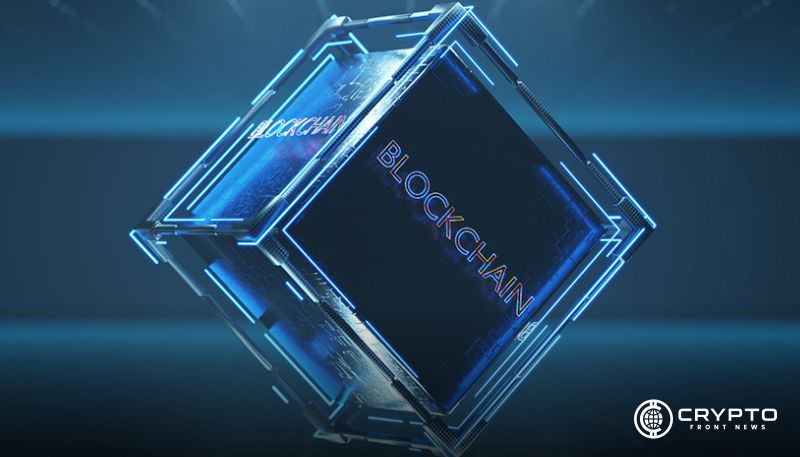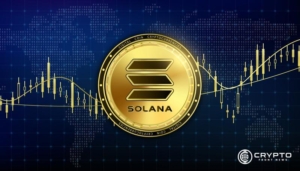Layer 3 blockchain solutions have emerged as an increasingly important development to decentralized technologies. Layer 3 uses Layer 2 protocols on its foundations to enable better scalability and lower costs, but grants more customization and tuning of decentralized applications (dApps). Layer 3 offers performance, security, and interoperability by offering a custom-fit approach to the application needs. Layer 3 is a game-changer in the evolution of Blockchain or the effect it will have on specific industries as discussed in this article.
What Is Layer 3 Blockchain?
Layer 3 consists of an application layer that is based on Layer 2 solutions. Whereas Layer 1 offers the core security, consensus, and scalability features, and Layer 2 addresses the issue of transaction scalability, Layer 3 is concerned with the optimization of the functionality of decentralized applications. It also allows developers to design specific environments that are based on the needs of their application through the provision of tailored protocols, consensus mechanisms, and security as well.
Layer 3 avoids congesting the underlying Layer 1 network since it offloads computational demands to application-specific chains to achieve higher transaction throughput at lower rates. It also enables developers to have their alternatives in terms of privacy and increases security and privacy. The L3 makes use of interoperability so that decentralized applications can communicate more efficiently across blockchain networks.
Advantages of Layer 3 Blockchain
Layer 3 provides several key advantages that improve the blockchain ecosystem and the experience for developers and users alike.
- Scalability: Layer 3 boosts scalability by offloading tasks to application-dedicated blockchains. This helps reduce congestion and increases transaction speeds, enabling decentralized applications to handle higher volumes without performance issues.
- Interoperability: One of Layer 3’s key strengths is enabling seamless communication between different Layer 2 networks. It allows decentralized applications to interact across various blockchain systems, ensuring efficient data and asset transfers and creating a more interconnected ecosystem.
- Customization: Developers can tailor Layer 3 networks to meet specific application requirements. This includes adjusting consensus mechanisms, security protocols, and privacy features to optimize performance, ensuring faster and more efficient application development.
- Security and Privacy: Layer 3 enhances security by isolating applications and offering customizable privacy protocols. This allows developers to safeguard sensitive data while ensuring that each application’s security needs are met.
Real-World Use Cases of Layer 3 Blockchain
Layer 3 blockchain solutions are being applied across various industries. Some of the key use cases include:
- DeFi: In decentralized finance (DeFi), Layer 3 solutions help handle high transaction volumes while maintaining low costs and fast processing times. Customizable governance features and privacy settings make Layer 3 ideal for DeFi applications, where security and efficiency are paramount.
- Gaming: The gaming industry benefits from Layer 3’s ability to handle real-time interactions and microtransactions. With low latency and scalability, Layer 3 supports seamless gaming experiences and large transaction volumes generated by in-game purchases, NFTs, and player interactions.
- Supply Chain: Layer 3 plays a significant role in improving supply chain transparency. It enables real-time tracking of goods with immutable records of every transaction. This reduces the risk of fraud, improves efficiency, and enhances trust among supply chain stakeholders.
- Identity Management: Layer 3 provides solutions for decentralized identity management, allowing users to control their personal data. This is especially useful in sectors like banking and healthcare, where regulatory compliance and privacy protection are crucial.
The Future of Layer 3 Blockchain
Layer 3 blockchain technology is not fully developed yet, but it has the potential to transform the decentralized applications in several industries. With the maturity of the technology, it might become the de facto standard of creating blockchain applications with richer performance, security, and privacy. Layer 3 will keep the increased adoption throughout industries and enable them to experience the full potential of decentralized systems.
Layer 3 can be combined with other new technologies through integration of artificial intelligence (AI) and internet of things (IoT) which opens up new use cases and builds a more embodied blockchain ecosystem. Because layer 3 is still developing, it will provide access to a higher level of innovation in decentralized systems and increased blockchain adoption.
Challenges and Considerations of Layer 3 Blockchain
Even with its potential, Layer 3 is exposed to a number of challenges. The complexity of integration is a major worry since compatibility with existing Layer 1 and Layer 2 networks may be difficult to achieve. The communications among various systems must be made in a seamless way, and developers must force the communication to occur in this manner which might cause delays in integration or problems.
The second difficulty is the absence of Layer 3 protocols standardization. Customizing is a good idea, although without universal standards the ecosystem of blockchain can be fragmented. This can make the relationship between distributed applications challenging.
Lastly, security is a very important factor. The larger the number of layers, the wider its attack surface becomes, and therefore the more concerned applications should be secure. Programmers should take care of securing every layer, in order to ensure that the whole system remains intact.
Conclusion
Layer 3 blockchain solutions provide scalability, customization and interoperability, transforming decentralized applications. Such benefits prove particularly beneficial to such segments of the industry as DeFi, games, supply chain management, and identity management. Even though issues in Layer 3 such as the complexity of integration, standardization, and security still exist, they will be major contributors to the future development of blockchain technology. As these concerns get resolved, Layer 3 will encourage additional blockchain usage, opening possibilities with new decentralized systems in various industries.





